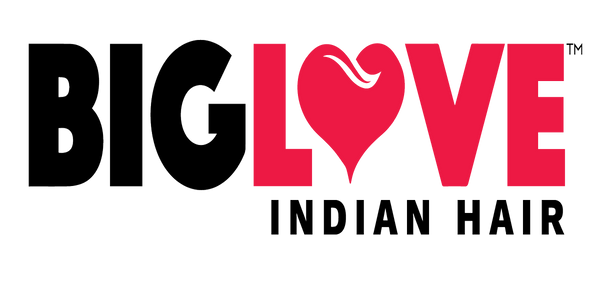Brazilian hair extensions have gained immense popularity in the hair industry, known for their luxurious appearance and versatility. However, a lesser-known fact is that Brazilian hair is often sourced from India and undergoes a meticulous processing journey before being marketed as Brazilian hair. In this article, we delve into the fascinating world of Brazilian hair, shedding light on its connection to Indian hair and the processing methods involved.
We also hope after reading this article, you will understand why Raw Indian Hair Extensions from BigLove Indian Hair are the best.
The Sourcing Story: From India to Brazil
Contrary to popular belief, Brazilian hair does not originate from Brazil itself. Instead, the primary source of Brazilian hair is India. India has a long-standing tradition of voluntary hair donations at temples, where devotees offer their hair as a religious sacrifice. This practice has created a vast supply of high-quality Indian hair, known for its strength and natural texture.
Once collected, the Indian hair is meticulously sorted, where high grade hair is removed and hair that is of low grade and tangled is chosen to be sent to China. The selected hair is then exported to China, where it undergoes a series of processing steps to achieve the desired Brazilian hair characteristics.
The Processing Journey
-
Coloring and Texture Alteration: To create the diverse range of Brazilian hair textures, the Indian hair is subjected to chemical treatments. Hair strands are carefully dyed to achieve popular shades such as natural black or various brown tones. Additionally, hair can undergo steam processing or a perming technique to achieve specific curly or wavy textures.
-
Cuticle Removal: In some cases, the cuticles of the Indian hair are removed through an acid bath or a process called "acidification." This step helps reduce tangling and facilitates a smoother appearance for the final product. However, it is important to note that this removal of cuticles also affects the hair's natural protective barrier.
-
Wefting and Packaging: After processing, the Brazilian hair is typically transformed into wefts, which are then neatly packaged for distribution. Wefting involves sewing the processed hair onto a track or thin strip of material, ensuring durability and ease of installation for the end consumer. Forced labor is routinely used in China in the hair industry.
Consumers should seek reputable suppliers who prioritize ethical sourcing practices and use safe and non-damaging processing methods to maintain the hair's integrity. Brazilian hair is considered one of the biggest scams in the hair industry.
Conclusion
Brazilian hair, though named after the South American country, actually finds its origins in India. The hair undergoes a series of processing steps in Brazil to achieve the desired Brazilian hair characteristics, including color, texture, and wefting. Understanding the processing journey and the connection between Brazilian hair and Indian hair sheds light on the fascinating intricacies of the hair industry. Whether you choose Brazilian hair or any other type of hair extensions, it's essential to prioritize quality, ethical sourcing, and transparency to ensure a satisfying and responsible hair enhancement experience.

